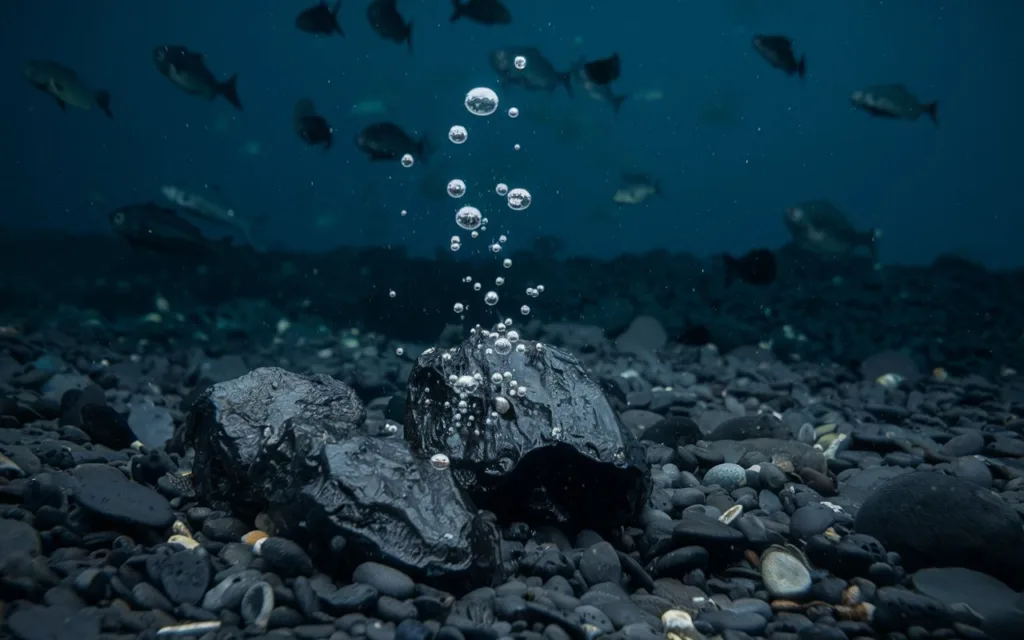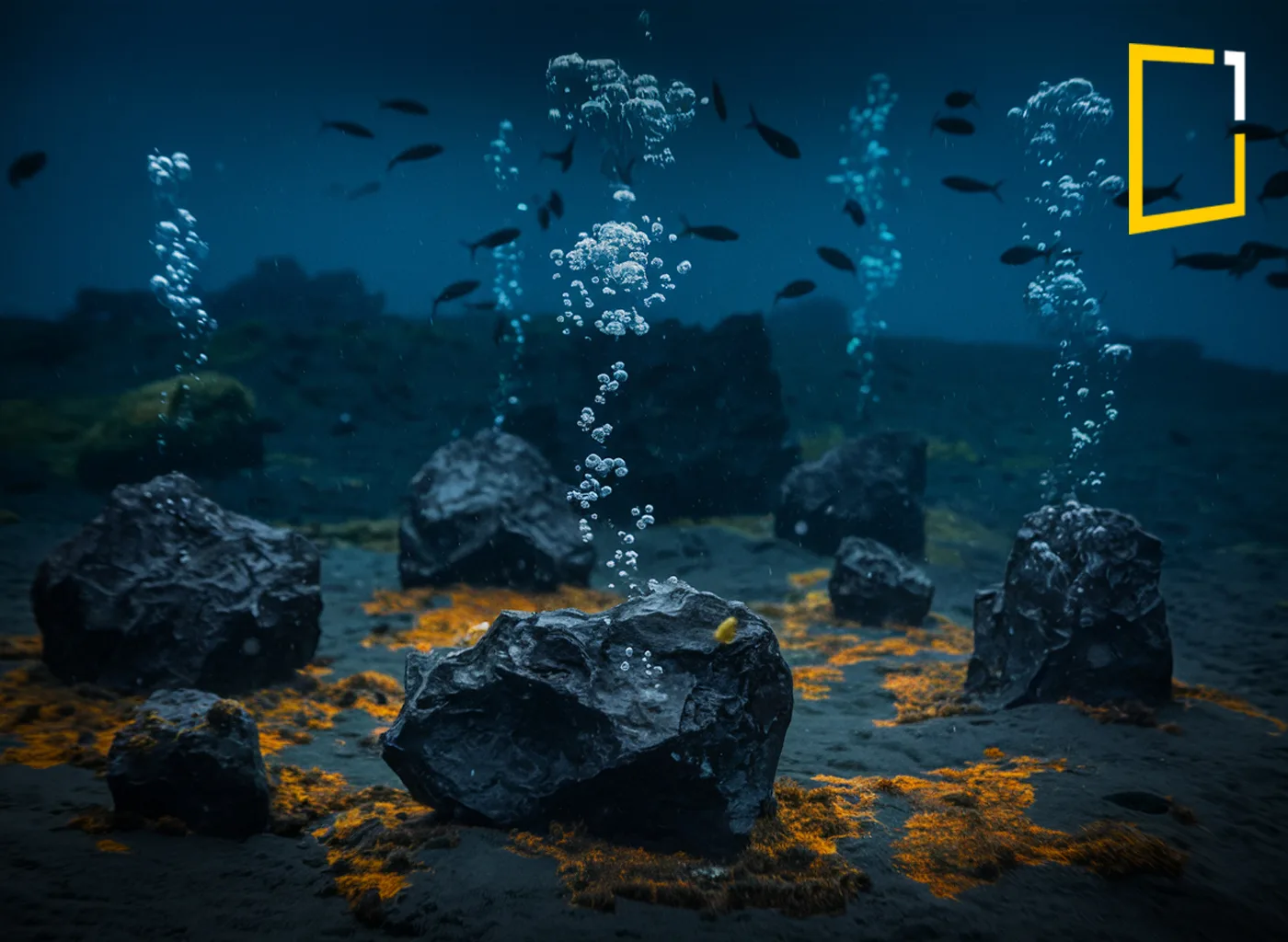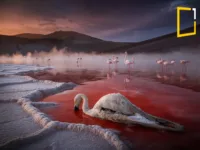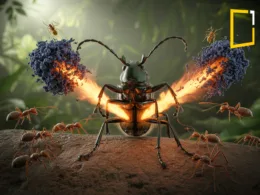A World Without Light, But Not Without Life
The deep ocean is one of Earth’s last great mysteries. Hidden beneath miles of crushing water pressure, this abyssal world is shrouded in perpetual darkness. Yet, against all odds, life thrives. A crucial element responsible for this deep-sea survival is “dark oxygen”, a phenomenon that challenges our understanding of marine ecosystems. But what exactly is dark oxygen, and how does it support life in the deepest, most hostile parts of our planet?
What Is Dark Oxygen?
Unlike the oxygen we breathe on land, dark oxygen refers to oxygen that exists in the deep ocean without direct contact with sunlight or surface photosynthesis. At first glance, this seems impossible—after all, oxygen is typically produced by photosynthetic organisms like plankton, algae, and plants, which require sunlight. So, how does oxygen persist in the darkest regions of the ocean?
The Perfect Gift for Kids is Here! 🎨
Looking for a fun, creative, and engaging way to keep your little ones entertained?

Our Digital Coloring & Activities Book is the ultimate solution! Packed with 26 pages of coloring pages, puzzles, mazes, games, and more, this printable PDF is designed to spark creativity and keep kids busy for hours.
👉 Get your’s now and make playtime unforgettable! Don’t wait – this deal won’t last forever! Use code onem50book and get 50% Off today! 🚀 🖍️ Let Your Kids’ Creativity Run Wild!
Discovering Dark Oxygen – How Oxygen is Produced in the Deep Sea
For decades, scientists believed that oxygen in the deep ocean originated from surface waters, carried down by ocean currents in a process called thermohaline circulation (or the “global conveyor belt”). While this is still a major factor, recent discoveries suggest that oxygen is also produced in the deep sea itself, independent of surface sources.
1. Microbial Chemosynthesis – The Hidden Oxygen Factories
The discovery of hydrothermal vents in the 1970s changed our understanding of life in extreme environments. Unlike traditional ecosystems that rely on sunlight, these deep-sea thermal vents support entire ecosystems without any light.
🔬 How does this happen?
Scientists found that specialized deep-sea bacteria and archaea thrive near hydrothermal vents, breaking down chemicals such as hydrogen sulfide, methane, and iron compounds to generate energy through chemosynthesis.
💡 Dark Oxygen Revelation:
Some of these microbes have been found to produce small amounts of oxygen as a byproduct of their metabolism. This discovery suggested that oxygen can be created in the deep sea without sunlight, challenging the long-standing belief that all oxygen must originate from surface photosynthesis.

2. Deep-Sea Volcanic Reactions & Oxygen Release
Beneath the ocean floor, geothermal and volcanic activity constantly releases trapped gases, including oxygen-rich compounds. In certain regions of the deep sea, these reactions may release free oxygen into the water, providing an additional source of oxygen for deep-sea organisms.
🧪 Example:
Studies have found elevated oxygen levels near some deep-sea hydrothermal vents and cold seeps, suggesting that chemical reactions between seawater and volcanic minerals may produce oxygen in trace amounts.
3. Cold Seep Bacteria & Oxygen Cycling
Cold seeps are areas where methane and other hydrocarbons leak from the seafloor, creating unique ecosystems that don’t rely on sunlight. Bacteria in these cold seep zones perform complex chemical reactions that not only sustain life but also contribute to oxygen cycling in deep-sea environments.
🌍 Why is this important?
🔹 It means that oxygen is not just transported from the surface but can be generated in situ (on-site).
🔹 This discovery expands our understanding of life’s adaptability and hints at how life might survive on other planets with subsurface oceans.

How Does Dark Oxygen Support Deep-Sea Life?
Without sunlight, deep-sea creatures have adapted to rely on alternative sources of oxygen and energy. Some of the key players benefiting from dark oxygen include:
1. Giant Tube Worms & Hydrothermal Vent Ecosystems
These strange, red-plumed creatures live near hydrothermal vents, where hot mineral-rich water seeps out of the Earth’s crust. Instead of relying on photosynthesis, symbiotic bacteria inside their bodies extract dark oxygen from chemosynthetic reactions, allowing them to thrive without needing to breathe like land animals.
2. Deep-Sea Fish & Giant Squid
Some species of deep-sea fish, like the anglerfish and the gulper eel, can absorb oxygen from these dark oxygen pockets, allowing them to survive in areas where surface oxygen is scarce. Even the legendary giant squid, which hunts in extreme depths, relies on these oxygen-rich zones to sustain its massive body.
3. Mysterious Gelatinous Creatures
The deep ocean is home to strange, almost alien-like creatures such as the Dumbo octopus, comb jellies, and deep-sea jellyfish. Many of these soft-bodied organisms drift in areas where dark oxygen is present, using it to maintain their slow but efficient metabolism.

Ready to Spread Your Wings?
Dive into the fascinating world of bird watching with “Bird Watching for Beginners”—your ultimate guide to becoming a birding expert! Whether you’re a nature lover or a curious beginner, this ebook has everything you need to start your journey. Click here to download your copy today and start exploring the beauty of birds!
Why Is Dark Oxygen Important for Earth’s Climate?
The deep ocean plays a major role in Earth’s oxygen cycle and overall climate regulation. Understanding how oxygen is produced and recycled in the abyss is essential for tracking changes in ocean health, carbon storage, and even predicting the impacts of climate change.
🔹 Carbon Sequestration: The deep ocean absorbs massive amounts of carbon dioxide, preventing it from entering the atmosphere. Dark oxygen zones help regulate this process by sustaining deep-sea organisms that contribute to the biological carbon pump.
🔹 Preventing Dead Zones: In some areas of the ocean, oxygen depletion leads to “dead zones”—regions where marine life cannot survive. The presence of dark oxygen helps sustain ecosystems in places where traditional oxygen sources are low.
🔹 Extreme Life Forms & Space Exploration: Studying deep-sea microbes that produce dark oxygen could help scientists understand how life might exist on other planets—like in the oceans of Europa (Jupiter’s moon) or Enceladus (Saturn’s moon), where similar extreme conditions exist.
The Future of Dark Oxygen Research
Scientists are just beginning to uncover the mysteries of deep-sea oxygen production. With new advancements in underwater robotics, deep-sea exploration, and AI-driven ocean mapping, we may soon learn even more about how life persists in the blackest depths of our planet.
But one thing is certain: The deep ocean holds secrets that could reshape our understanding of life itself.
Conclusion: A Hidden Force That Sustains Life
Even in the blackest, coldest waters, the ocean finds a way to sustain life. Dark oxygen challenges what we thought we knew about oxygen production and proves that life can adapt in extraordinary ways. As we continue exploring these underwater frontiers, we may unlock answers to some of Earth’s biggest mysteries—and maybe even the origins of life itself.
🔬💙 Would you dare to dive into the deep ocean to witness this hidden world? Share your thoughts below! 🌊⬇
—————————————————————
Thanks for joining this wild ride. Stay curious, stay tuned, and let’s make our world brighter!
Subscribe to our channel and stay tuned for more intriguing mysteries and scientific wonders. Together, let’s uncover the secrets of the Earth and expand our understanding of this fascinating world.
Check out the latest blog and video on YouTube and learn something new today.
Attention, all readers! To deepen your understanding and stay informed on the latest news and trends, be sure to click on the link to access more informative articles.
Join the family by liking us on Facebook, or follow us on Twitter and Instagram.
If you liked this story, sign up for the weekly OneMinuteExplore features newsletter called “The Essential List”. A handpicked selection of stories from OneMinute Nature, Wildlife, Culture, Travel, Stories, and more… delivered to your inbox every Weekend.
👉 We may earn a commission from purchases made through links in this content, but it won’t affect your price. Rest assured, our recommendations are based on thorough research and genuine belief in the products. Your support through these links helps us continue providing valuable content. Thank you for being so supportive!












